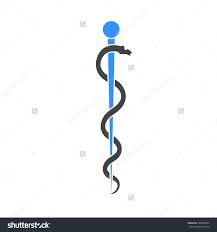Subway riders in standing room-only cars try not to think too much about what organisms might be happily residing on the poles they grasp during the lurching trip.
To obtain some hard data, Harvard researchers conducted a study in which they swabbed seats, walls, poles, hand grips and ticket machines in the Boston transit system, and then did DNA analyses to find out what organisms they had collected. They recently released their study’s results.
It’s still a good idea to wash your hands after a subway ride, but straphangers can feel somewhat relieved at the study’s finding that the surfaces were contaminated, but with generally innocuous bacteria. If one is relatively healthy, the germs picked up from a subway grasp shouldn’t present any problem.
The reason for the inclusion of the word “generally,” though, in the previous paragraph is because even strains of common bacteria can cause terrible diseases under certain circumstances, like among the immunosuppressed.
Which thought should serve as a reminder that all that stands between each of us and myriad invisible agents of harm is the unbelievably complex biological network of tissues, cells, enzymes and antibodies that science calls the immune system.
Were the myriad mazikin that constantly surround us visible to us, says Abba Binyamin (Berachos 6a), we would be frozen in terror. Whether he had in mind the fungi, protozoa, bacteria and viruses that regularly seek to invade our bodies must remain speculation. But, regarding the countless organisms that would, were it not for our immune systems, do us great harm, the statement would have been entirely true.
This Shabbos, we will be reading about the nachash hanechoshes, the “copper snake” that Moshe Rabbeinu mounted on a staff during the plague of poisonous serpents that Hashem had brought after the people showed a lack of gratitude and complained about their sustenance. Those poisoned gazed at it and were cured. Chazal teach us that, of course, it wasn’t the replica that cured them but that the gazers’ hearts were aimed Heavenward (brought by Rashi, Bamidbar, 21:8).
What, then, though, was the snake for? Why the middleman (or middle-reptile)? Why not tell the people to just gaze directly toward Heaven, where their hearts were to be?
Rabbeinu Bachya notes that the snakes plaguing our ancestors are referred to with the definite article, “hei” – the snakes. And he sees in that seemingly superfluous Hebrew letter a reference to Devarim 8:15, where the midbar is characterized as a place of snakes and scorpions. The snakes, explains Rabbeinu Bachya , refers to the ones that regularly filled the desert.
Rav Samson Raphael Hirsch expands on that thought, and sees the people’s gazing at the copper snake as focusing them on the fact that snakes in the desert were ubiquitous. Looking at the metal serpent would bring them to appreciate how, every day without a snake bite was a day during which Hashem had protected them from a clear and present danger. With that realization, born of meditation on the copper snake-replica, our ancestors’ hearts could truly, meaningfully aim Heavenward.
It’s more than interesting that the image of a serpent entwined around a staff has become a widely employed symbol of the medical profession. Although the symbol is believed to have been borrowed from Greek avodah zarah, the ultimate origin of the image seems clearly to be the nachash hanechoshes.
More than interesting because a fundamental pillar of modern medicine is the understanding that much disease is caused not by “vapors” or internal imbalances, as was once assumed to be the sources of all illness, but rather by the failure of bodies to repel invaders – the bacteria, viruses, fungi, and parasites that surround us all the time.
That might seem obvious to us, but germ theory, the idea that microorganisms lie at the root of many diseases, only became accepted in the nineteenth century, less than two hundred years ago.
Now, though, it is a pillar of medical practice that sanitation is key to health. Surgery requires great antiseptic measures, medical personnel wear sterilized disposable gloves, we all recognize that diseases can spread through the transfer of germs of various types.
So, however the medical world might conceive of the source of the “Rod of Asclepius,” if it is indeed a depiction of the nachash hanechoshes, it is, an unintentionally apt symbol of the lesson of that copper snake. That is to say, the fairly recent realization that we are indeed surrounded by myriad mazikin, from which only miracles – the immune systems Hashem has made part of our bodies – protect us.
© 2016 Hamodia
